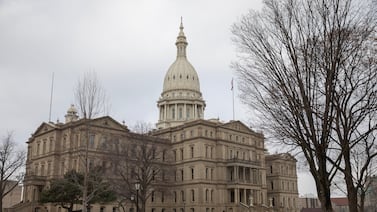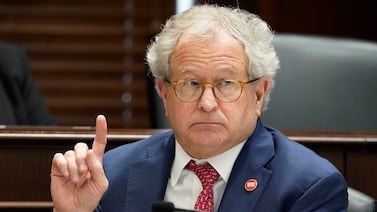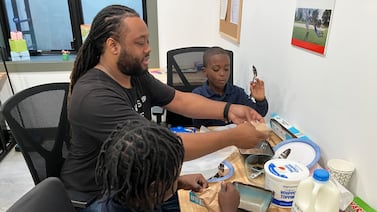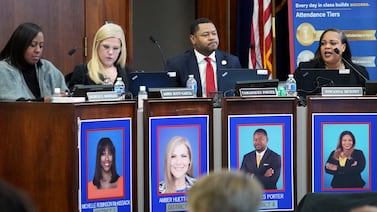Sign up for Chalkbeat’s free monthly newsletter How I Teach to get inspiration, news, and advice for — and from — educators.
Indiana’s 2026 Teacher of the Year Megan Johnson always knew she wanted to be a teacher.
Growing up, she loved the classroom. And her teachers helped her build confidence and discover her talents, despite being a student who “often blended in,” she said.
“I realized that what I loved most was the relationships and the sense of belonging that school created,” Johnson said. “I knew I wanted to be part of giving that same experience to my own students one day.”
As a fourth grade teacher at Central Elementary in Plainfield, Johnson said she wants “to be the teacher who truly sees every student, who takes time to know them well, and who pours into them the way my teachers poured into me.”
Johnson was named Teacher of the Year by the Indiana Department of Education in October, and said she’s still “in awe of it.” The more than 60-year-old state program aims to inspire and celebrate the teaching profession in Indiana. State Secretary of Education Katie Jenner praised Johnson for her embrace of the science of reading, calling her “a dedicated literacy champion.”
In her new role, Johnson said she wants to get to know teachers across the state.
“I want to celebrate the hard work and dedication of educators and share the great things happening in our schools with the broader community,” she said. “Above all, I hope to carry the voices of teachers and students with me, shining a light on the passion, creativity, and heart that exists in classrooms across our state.”
Below, Johnson told us about her love of reading, pitching a playground project with her students, and the best advice she’s ever received.
This interview has been lightly edited for length and clarity.
What’s your favorite lesson to teach and why?
I tell my students all the time, “Oh, this is my favorite subject,” or “This is why I love teaching science,” or “This is why I love teaching math and reading.” The truth is, I really enjoy all subjects because each one has something special to offer.
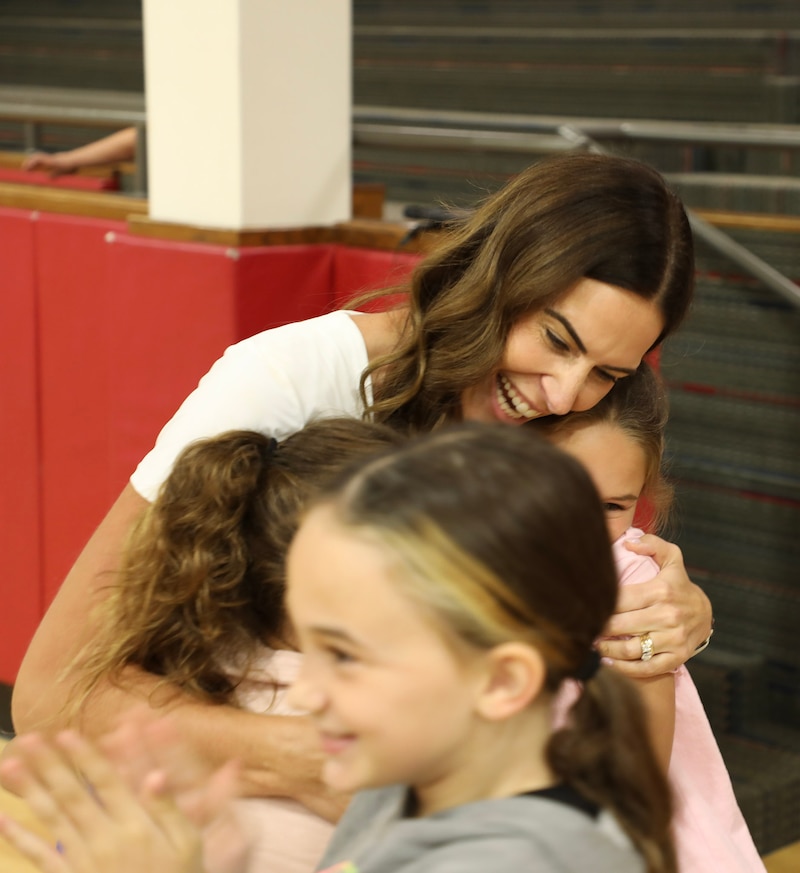
Science stands out because it is so hands on and gives students the chance to learn through discovery. I can introduce a concept, but they get to explore and see the learning come to life in front of them. That moment of curiosity and excitement in their eyes is incredible to watch. In fourth grade, we do a lot with energy, and those lessons are so much fun. Students make real connections and begin to see how the world works.
Still, I could choose favorite lessons from every subject area because each one offers its own kind of magic in the classroom.
What does teaching literacy look like day-to-day in your classroom?
In my 19 years of teaching, literacy is the subject that requires the most effort, care, and understanding of each individual student. It is something that I am always studying and reflecting on, trying to find the best ways to reach every learner in my classroom. I truly believe that students need to have a purpose for everything they do in reading. When I let them in on what that purpose is, they invest more deeply in their learning and take greater ownership of their progress.
Over the last five years, I became a strong supporter of the science of reading. Even when I did not fully understand it at first, I knew it was something worth trying. Each year since, I have continued to add new practices and strategies that align with that research.
In my classroom, literacy is active, purposeful, and engaging. My students read a variety of texts and apply comprehension skills in meaningful ways. For students who need it, we include focused work on phonics. I make it a priority to build background knowledge and vocabulary across all subject areas so students can connect more deeply with what they read.
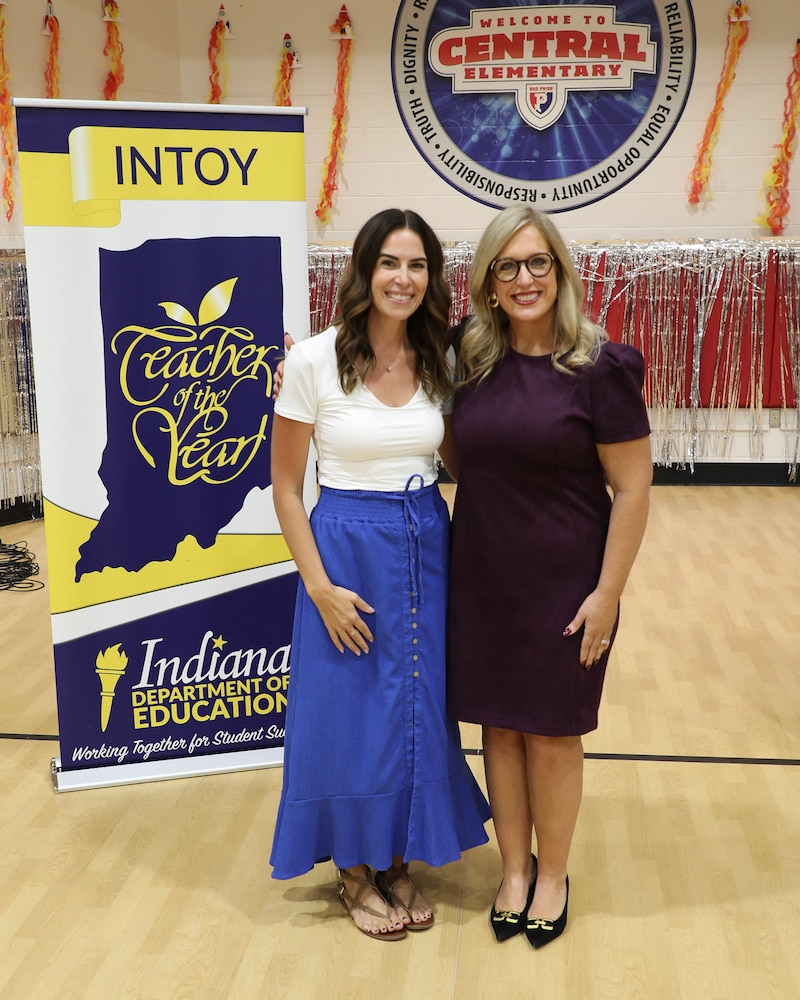
Literacy in my classroom is a living, growing process that I continue to refine each year, and I am so proud of the progress my students make through it.
What is an example of the project-based learning you do with students and community partners?
I am especially proud of a playground redesign project that my students and I created in September 2020.
After reading a text that highlighted the diversity of needs, we took a closer look at our own playground and realized that it was not fully accessible to all students, including some at our school. That sparked an important conversation about inclusion and fairness, and I challenged my students to redesign our playground so that all children in our school and community could use it.
We discussed working within a budget, researched playground equipment that would meet the needs of children of different ages and abilities, and even brought in an architect to talk about design, blueprints, and accessibility standards. My students created digital models of their redesigned playgrounds and presented their ideas to our principal for consideration.
This project went far beyond a single subject. It combined literacy, math, science, and technology, but more importantly, it helped my students see the impact they can have on the world.
Although the funding wasn’t available to make it happen, it was one of those experiences that truly made learning come alive and showed students that their voices and ideas matter. One student fell in love with architecture, and still plans to pursue it as a career as a now middle schooler.
What’s the best advice you’ve ever received, and how have you put it into practice?
The best advice I ever received came from my first principal, Mr. Mike Underwood. He told me to “shut my door and teach” in the kindest, most loving, and professional way. At the time, I did not fully understand what he meant, but looking back, it makes perfect sense.
What that advice means to me now is that there will always be a lot of noise around education. There are positives and negatives, and sometimes the negative voices seem louder than all the good that is happening in schools. But there truly is so much good within the walls of every classroom, including my own. I have made my classroom an anchor place for my students. I bring in people from the community to connect with them, use best practices and research to guide my instruction, and make sure my students have everything they need to grow and be successful.
So, in that sense, I do exactly what he told me years ago: I shut my door and teach.
Inside those walls, I can control the climate, joy, and learning. It is a space filled with positivity and purpose. I block out the noise that does not serve my students, and when they leave my classroom, I hope they carry that same joy, learning, understanding, and confidence into the world.
How do you take care of yourself when you’re not at work?
Outside of school, my most important roles are being a wife and a mother. My husband and I are raising two sons, a 10-year-old and a 14-year-old, who are both active in sports. Along with their activities, we love exploring, hiking, and traveling. We have visited 19 of the national parks, and we try to take trips that help our boys see the world, meet new people, and gain a broader perspective on life.
I also take care of myself in smaller ways. I enjoy running, reading, and spending time with friends over meals, sharing stories and catching up. Balancing family time, outdoor adventures, and moments for myself helps me recharge and stay grounded, so I can bring my best self to my students each day.
MJ Slaby oversees Chalkbeat Indiana’s coverage as bureau chief. Contact MJ at mslaby@chalkbeat.org.


